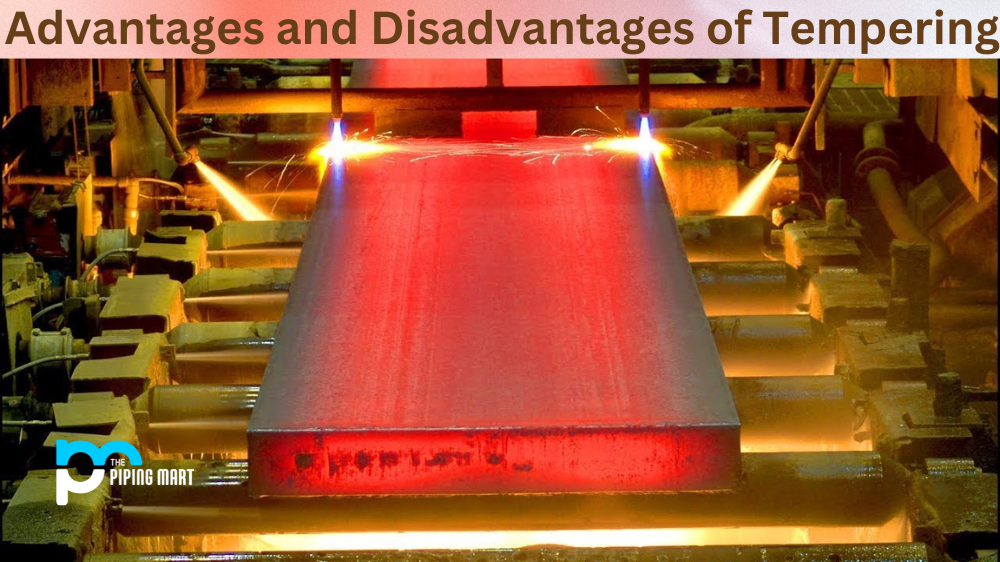Temperatures rise and fall, and so do chocolate makers’ moods. Chocolate makers must have a great understanding of tempering in order to successfully create smooth and delicious confections. Tempering is a process that helps manipulate the chemical structure of the cocoa butter in chocolate, creating the perfect balance of shine, snap, and taste. Let’s dive into what exactly tempering is all about!
What Is Tempering?
Tempering is a method used by chocolatiers to stabilize the cocoa butter crystals in melted chocolate. This is done by heating it up and cooling it down at specific temperatures. When heated to 115-120°F (46-48°C), most of the cocoa butter crystals will melt and become liquid. The chocolate is then cooled until it reaches 82-84°F (28-29°C). The cooling process can be done using a cold marble slab or a bowl filled with ice and water. During this process, some of the cocoa butter crystals will solidify again, creating small solid particles throughout the chocolate. This helps keep the chocolate from melting too easily when handled or exposed to high temperatures, which can often cause it to become grainy or dull looking.
Advantages Of Tempering
When tempered correctly, chocolate has an attractive shine, a crisp snap when broken apart, and a smooth texture on the tongue. It also melts at body temperature—which means it won’t turn into liquid as soon as you put it in your mouth! On top of that, tempered chocolate has improved its shelf life compared to untempered varieties due to its increased stability against environmental factors like heat and humidity. Additionally, tempered chocolate looks better overall since its molecules are more regularly arranged than untempered varieties – making them more photogenic for Instagram shots!
Improved Strength and Durability
One of the primary benefits of tempering is that it improves the strength and durability of metals. When metal is heated and then cooled slowly, the molecules within the metal align themselves in a more orderly fashion. This process makes the metal stronger and less likely to break or shatter.
Increased hardness
Another benefit of tempering is that it increases the hardness of the metal. Harder metal is less likely to be dented or scratched and can therefore maintain a more polished appearance for longer periods of time.
Ductility
In addition to increased strength and hardness, tempering also improves the ductility of the metal. Ductility is a measure of a material’s ability to deform under stress without breaking. By improving ductility, tempering makes the metal less likely to crack or break under stress.
Corrosion resistance
Tempering also helps to improve the corrosion resistance of a metal. When metal is heated and then cooled slowly, the outer layer of the metal becomes harder and less porous. This improved surface layer helps to protect the metal from corrosion and oxidation.
Enhanced electrical and thermal conductivity
Finally, tempering can also enhance the electrical and thermal conductivity of the metal. This improved conductivity makes tempered metal an ideal choice for use in electrical applications where good conductivity is required.
Disadvantages of tempering
It Can be Time-Consuming.
Tempering chocolate can be a time-consuming process, as it requires melting the chocolate, cooling it to a specific temperature, and then reheating it to another specific temperature. This process can take up to an hour, which may not be practical for some people.
It Can be Difficult to get the Temperatures Right.
In order for tempering to be successful, the chocolate must be heated to and cooled at very specific temperatures. If the chocolate is not heated or cooled to the correct temperature, the cocoa butter will not crystallize properly, and the chocolate will not have the desired texture or flavour.
It Requires Special Equipment.
Tempering chocolate also requires special equipment, such as a candy thermometer and a double boiler. Not everyone has these items in their kitchen, which can make tempering chocolate difficult or impossible.
It Can be Easy to Mess up.
Because of the precise nature of the process, it is easy to mess up when tempering chocolate. If even one step is not done correctly, the entire batch of chocolate can be ruined. This can be frustrating for people who are new to tempering chocolate or who do not have a lot of experience with it.
Results can be Unpredictable.
Even when all of the steps are followed correctly, there is no guarantee that the tempering process will go smoothly. The results can sometimes be unpredictable, which can be frustrating for those who are trying to achieve a specific result.
Conclusion:
All in all, tempering your own chocolates takes time but yields impressive results if done properly. While there are some risks involved with tempering – such as overworking or overheating your chocolate – these are minimal compared to the rewards you receive from perfectly crafted chocolates! If you’re just getting started with tempering your own chocolates at home or in your business, practice makes perfect—so take your time and make sure you’re familiar with all of the steps before diving into production mode! With patience and practice, anyone can become a master of tempering their own delicious chocolates!

Abhishek is a seasoned blogger and industry expert, sharing his insights and knowledge on various topics. With his research, Abhishek offers valuable insights and tips for professionals and enthusiasts. Follow him for expert advice on the latest trends and developments in the metal industry.




